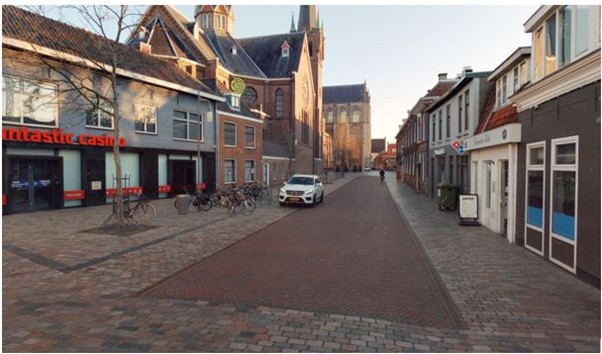Goes' inner city is confronting significant heat stress, exacerbated by urbanisation and a lack of green spaces. To tackle these issues, the municipality is turning to nature-based solutions, including greening façades and surfaces, to cool the neighbourhood and boost biodiversity. This "From Grey to Green" initiative aims to transform the area into a more liveable and sustainable urban environment, enhancing resilience to climate change while improving the quality of life for residents.
Despite the project's potential, there are several challenges to overcome. Technical hurdles, such as the presence of buried cables, complicate the greening efforts. Additionally, rising material and labour costs due to inflation threaten the budget. However, strong political support for climate adaptation provides a solid foundation for success. The project's long-term impact will also depend on active community participation and collaboration with local businesses and stakeholders.

Key Challenges and Opportunities
The greening initiatives in Goes present both opportunities and obstacles. The political will for climate resilience is a significant advantage, yet inflation-driven cost increases are putting pressure on the budget. Legal complexities, especially regarding property rights and obtaining cooperation from housing corporations and private owners, could slow progress.
Community engagement plays a crucial role in the success of the project. Involving local residents and businesses is key to fostering a sense of ownership and commitment to sustainability. However, socio-economic challenges and competing local priorities could pose challenges to collective action. Vandalism also remains a concern for the long-term maintenance of green infrastructure.
Key Actions for Success:
✅ Technical Training: Provide training for local teams to manage technical challenges, particularly around existing infrastructure.
✅ Inclusive Community Engagement: Develop strategies to engage vulnerable communities and encourage broader participation in the decision-making process.
✅ Regional Collaboration: Partner with neighbouring cities to share resources, knowledge, and best practices for urban climate adaptation.
✅ Stakeholder Cooperation: Work closely with housing corporations and private property owners to ensure the smooth implementation of greening initiatives.
✅ Community Stewardship Programme: Encourage local ownership and establish monitoring mechanisms to reduce vandalism risks, ensuring the project's sustainability.
Through careful planning, community involvement, and collaboration, the Goes inner city pilot has the potential to serve as a leading example of climate adaptation in urban areas. By transforming grey urban spaces into green, sustainable environments, the city is taking important steps toward a cooler, greener, and more resilient future.
Stay tuned and follow this journey as Goes continues its transformation from grey to green, setting the stage for a brighter, more sustainable urban future.